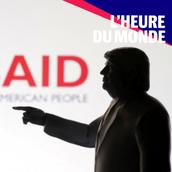Nepal: HPV vaccination, victim of US budget cuts, through the eyes of photographer Nanna Heitmann

A few days after his arrival at the White House, US President Donald Trump imposed an abrupt freeze on foreign development aid. This measure was quickly followed by the gradual dismantling of USAID, the main instrument of US humanitarian diplomacy, leading to the complete suspension of many international aid grants.

To confirm his administration's intentions, US Health Secretary Robert F. Kennedy Jr. announced on June 26 that he was suspending the government's partnership with GAVI, the Global Alliance for Vaccines and Immunization. Until the organization can demonstrate the scientific accuracy of the project, "the United States will not contribute further" to its funding, he warned. GAVI had stated that it would receive $300 million (€254 million) from the United States in 2024.
This winter, photographer Nanna Heitmann covered the first large-scale HPV vaccination campaign in Nepal, funded by GAVI. Approximately 1.6 million adolescent girls aged 10 to 14 benefited. It also provided an opportunity for Nanna Heitmann to meet a population often far from the lenses and cameras, particularly in Timang, a Himalayan community located at an altitude of 2,615 meters.
Human papillomavirus (HPV) is the most common sexually transmitted disease in the world and responsible for many cervical cancers. Its impact is greater in middle- and low-income countries due to the difficulty of reaching at-risk populations with vaccination. However, with the US withdrawal, this first vaccination campaign may well be the last.
You have 0% of this article left to read. The rest is reserved for subscribers.
lemonde





